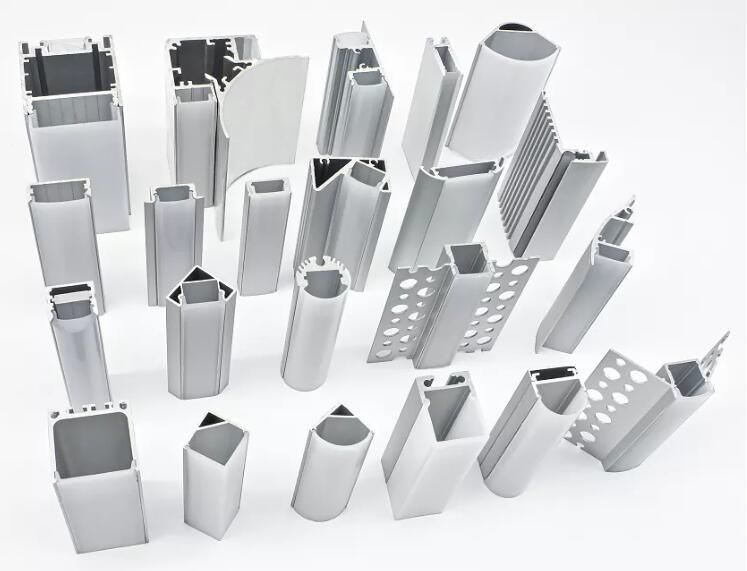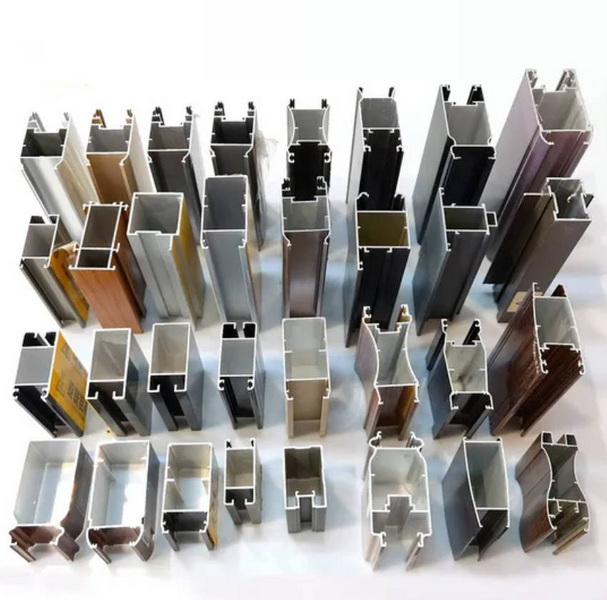English 




Views: 222 Author: Astin Publish Time: 2025-07-18 Origin: Site



Content Menu
● How to Choose Aluminum Profiles
>> 2. Aluminum Alloy Melting Furnace:
The production of aluminum products for construction in China began in the early 1980s, and developed at a pace that led the world. From aluminum profiles, aluminum doors and windows, aluminum curtain walls, to frameless glass curtain walls, it took just over ten years. The fast development of China's construction aluminum industry is mainly due to the import of aluminum and aluminum door/window production lines from over a dozen foreign countries, drawing on their strengths and emphasizing absorption and innovation.
However, such rapid development has also brought many problems. For example, the number of aluminum profile manufacturers across the country has increased rapidly, resulting in excessive production capacity. Most factories' production does not reach designed capacity; those that reach even half the design capacity are considered good. This leads to intense market competition.
There are more than 4,000 aluminum door and window manufacturers (not including individual workshops); despite rapid real estate growth in recent years, the demand for aluminum doors and windows is still far below the supply of aluminum profiles. Thus, overcapacity exists in both sectors, and the situation remains that of "too much porridge, too few monks." Some aluminum door and window manufacturers, to secure contracts, use unscrupulous means such as price-cutting and even deceiving clients with inferior or counterfeit products.
One must not be driven solely by price, at the expense of quality, to avoid being cheated. Below is a brief introduction on how to distinguish the quality of aluminum profiles and aluminum doors and windows for users' reference.

Many domestic aluminum profile manufacturers produce profiles with large differences in material quality due to various conditions, leading to significant price differences—up to 4,000-5,000 yuan per ton. The price of aluminum ingots is basically uniform across the country, so such large price differences in processing indicate big differences in quality. The key factors that determine aluminum profile quality are:
The 6063 alloy is mainly composed of aluminum, magnesium, and silicon. Each element must be within a certain content range. Because magnesium is expensive, some manufacturers reduce magnesium to the minimum permissible quantity or even below it. Some even use scrap wires, old pots, and pans instead of quality alloy, meaning the product can hardly be termed 6063 alloy. As a result, the mechanical strength is so low that the profile can be easily bent by hand, known as "as soft as noodles." This is one reason why some aluminum profiles are much cheaper.
Reputable manufacturers have internal standards when formulating alloys, using precise ratios among aluminum, magnesium, and silicon. Only high-quality formulas can guarantee product quality; otherwise, no subsequent process can compensate.
How the well-formulated 6063 alloy is melted, and in what kind of furnace, is also critical. Currently, some domestic furnaces are outdated (from the 1940s), while some others are modern (from the 1990s). The worst use primitive crucible furnaces, fueled by coal, oil, gas, or electricity, with or without chimneys. More advanced ones use rectangular or round furnaces, with the best able to tilt and pour molten aluminum. Furnace capacities range from 1 to 50 tons. More advanced lines add a settler furnace below the main one, to remove slag and gas before casting rods for extrusion. If exhaust gases and slag are not vented properly, they remain in the molten aluminum, resulting in casting rods with severe slag inclusions and bubbles, leading to poor aluminum profile quality and lower price.

The level of casting equipment varies greatly. The oldest in China is iron-mold casting (from the 1940s); advanced equipment includes hydraulic semi-continuous casting. Iron-mold cast rods have poor crystal structure and large slag and bubble inclusions. Most factories now use horizontal casting (continuous casting) and semi-continuous casting, with the best using hydraulic power for stable, smooth casting with evenly cooled rods. Only with high-quality 6063 rods can good profiles be produced. Without advanced equipment, it is impossible to make good rods or profiles. Some factories do not produce their own rods but buy 6063 alloy rods from others, thus quality control is beyond their grasp. Using backward equipment reduces investment and production cost, another reason for large price differences.
There is a wide range of extrusion presses in China—from simple, makeshift ones to advanced imported machines from Taiwan, Japan, the USA, and Germany. The best are from Japan, the USA, and Germany, followed by Taiwanese machines. Even using the same casting rod, the quality of the profile varies widely based on the extrusion press. Architectural aluminum doors and windows often use 6063T5 status (American standard, equivalent to China's LD31RCS). T5 and RCS both indicate wind-quenched and artificially aged condition. Rapid cooling is critical: after extrusion at over 500°C, profiles must be quenched below 200°C as quickly as possible to ensure optimal strength. Some factories have only one small fan, while others have a dozen on a production line. If air cooling is insufficient, quenching is incomplete, and strength after aging is poor. Some factories lack proper air cooling altogether.

In recent years, some manufacturers have reduced profile wall thickness to decrease material use and cost, catering to low-price tenders. This practice is dangerous because every profile is engineered to a specific cross-section and wall thickness for strength. Arbitrarily reducing thickness drastically lowers strength. For example, on July 19, 1991, a typhoon struck the Chaoshan region of Guangdong, blowing off many aluminum doors and windows made of thin-walled profiles (some as thin as 0.6mm), causing injuries and major losses. In Shantou, profiles thicker than 1.2mm rarely failed. Therefore, thin-walled profiles are truly inferior products. Proper minimum thickness for aluminum window profiles is 1.2–1.4mm for the 70 and 90 series, 1.2–2.0mm for aluminum door profiles, and above 3mm for curtain wall profiles. Thin walls create safety hazards—users are strongly advised not to pursue cheap, thin-walled aluminum profiles.
Top Aluminum Furnitures Manufacturers and Suppliers in Czech Republic
Top Aluminum Furnitures Manufacturers and Suppliers in Poland
Top Aluminum Furnitures Manufacturers and Suppliers in Belgium
Top Aluminum Furnitures Manufacturers and Suppliers in Finland
Top Aluminum Furnitures Manufacturers and Suppliers in Denmark
Top Aluminum Furnitures Manufacturers and Suppliers in Greece
Top Aluminum Furnitures Manufacturers and Suppliers in Portugal
Top Aluminum Furnitures Manufacturers and Suppliers in Austria
Top Aluminum Furnitures Manufacturers and Suppliers in Norway
Top Aluminum Furnitures Manufacturers and Suppliers in Sweden
